


xxxxxIn 1822, after he and his friend John Herschel had spent long hours compiling astronomical tables, the English inventor Charles Babbage, a professor of mathematics at Cambridge University, began building a mechanical calculating machine -
CHARLES BABBAGE 1791 -
(G3b, G3c, G4, W4, Va, Vb)
Acknowledgements
Babbage: obituary portrait from The Illustrated London News of October 1871, artist unknown, derived from a photograph taken in July 1860. Machinery: Science Museum, London. Ericsson: date and artist unknown. Herschel: by the English portrait painter Lemuel Francis Abbott (c1760-
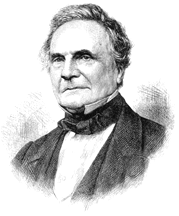 xxxxxThe Englishman Charles Babbage, a professor of mathematics at Cambridge University, began his career as an inventor in 1822. It was in that year that he completed the construction of a small working model of an automatic mechanical calculating machine. He had realized for some time that in mathematics many long computations consisted of a series of regularly repeated operations, a process which could be effectively harnessed automatically as well as mechanically. He called this prototype a “difference engine” and the following year, with approval from the Royal Society and financial assistance from the government, he started the construction of a full-
xxxxxThe Englishman Charles Babbage, a professor of mathematics at Cambridge University, began his career as an inventor in 1822. It was in that year that he completed the construction of a small working model of an automatic mechanical calculating machine. He had realized for some time that in mathematics many long computations consisted of a series of regularly repeated operations, a process which could be effectively harnessed automatically as well as mechanically. He called this prototype a “difference engine” and the following year, with approval from the Royal Society and financial assistance from the government, he started the construction of a full-
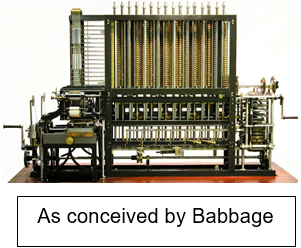 xxxxxThe idea of making such a machine came to him while he was a student at Cambridge in the early 1800s, working with the astronomer-
xxxxxThe idea of making such a machine came to him while he was a student at Cambridge in the early 1800s, working with the astronomer-
xxxxxHe called this new machine an “analytical engine”, and his attempt at making it was to occupy him for many years, end in failure, and use up much of his fortune. Whereas his “difference engine” had had but one function, he saw this new device as being able to perform any mathematical calculation required by its operator. It would be programmed by a punch-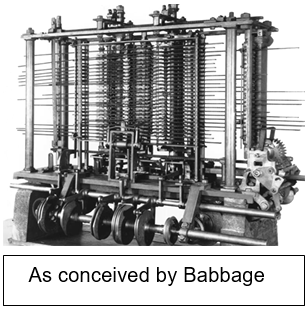 French weaver Joseph Marie Jacquard for the working of a loom, and be equipped with a memory unit which would store numbers and be capable of making decisions based on the results of previous computations. Like his difference engine, it would be powered by steam and, when fully completed, would require only one operator.
French weaver Joseph Marie Jacquard for the working of a loom, and be equipped with a memory unit which would store numbers and be capable of making decisions based on the results of previous computations. Like his difference engine, it would be powered by steam and, when fully completed, would require only one operator.
xxxxxBabbage put a great deal of thought and effort into this project, particularly in the mid 1830s, but it proved a concept ahead of its time. It is estimated that it would have required a minimum of 50,000 moving parts and there was just not the tools and manufacturing skills available to meet such a demand. Asxa result, the “analytical engine” was never completed. Nonetheless, a useful description of the engine was given by Augusta Ada Lovelace (1815-
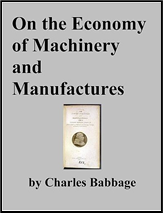 xxxxxBabbage was born in London, and attended Cambridge University. He became a fellow of the Royal Society in 1816 and was appointed professor of mathematics at Cambridge in 1828, a post he held for twelve years. He never taught, but spent a great deal of time on research, and showed an interest in a wide variety of subjects. Apart from the work on his calculator and would-
xxxxxBabbage was born in London, and attended Cambridge University. He became a fellow of the Royal Society in 1816 and was appointed professor of mathematics at Cambridge in 1828, a post he held for twelve years. He never taught, but spent a great deal of time on research, and showed an interest in a wide variety of subjects. Apart from the work on his calculator and would-
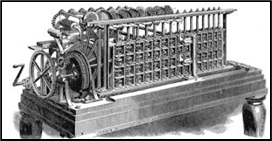 xxxxxFollowing his death, the Royal Society produced no obituary, the Times ridiculed him, and only a handful attended his funeral, but though he never managed to build a working mechanical computer, Babbage was the first to conceive the feasibility of such a machine, and, in essence, his design concepts contained the basic features -
xxxxxFollowing his death, the Royal Society produced no obituary, the Times ridiculed him, and only a handful attended his funeral, but though he never managed to build a working mechanical computer, Babbage was the first to conceive the feasibility of such a machine, and, in essence, his design concepts contained the basic features -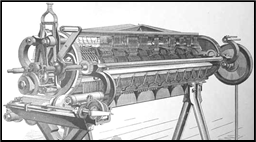 left). Much later, in 1937, Babbage’s notebooks were discovered, and in 1991, to mark the 200th anniversary of the inventor’s birth, a group of British scientists built the difference engine to his specifications and, after correcting two errors, found it to be accurate to 31 digits! An unfinished section of his original machine can be seen at the Science Museum at Kensington, London.
left). Much later, in 1937, Babbage’s notebooks were discovered, and in 1991, to mark the 200th anniversary of the inventor’s birth, a group of British scientists built the difference engine to his specifications and, after correcting two errors, found it to be accurate to 31 digits! An unfinished section of his original machine can be seen at the Science Museum at Kensington, London.
xxxxxIncidentally, the eccentric professor Babbage, as befits a mathematician, was a stickler for accuracy. He once wrote to the English poet Lord Tennyson to object to his lines “Every moment dies a man, Every moment one is born”. He pointed out that the world’s population was growing and therefore the second line should read “Every moment one and one-
xxxxx…… His difference engine, designed to avoid the “intolerable labour and fatiguing monotony” involved in mathematical calculation, was so named because it was to work by solving the differences between the values given to variables within equations.
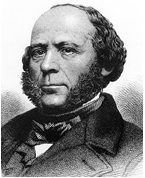 xxxxxAnotherxinventor at this time was the Swedish-
xxxxxAnotherxinventor at this time was the Swedish-
Including:
John Herschel

W4-
xxxxxJohn Herschel (1792-
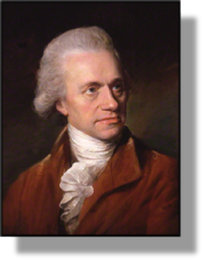
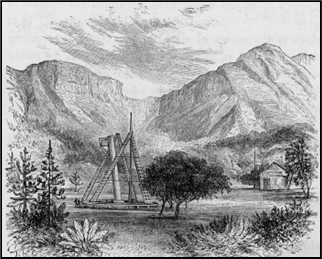 xxxxxJohn Herschel (1792-
xxxxxJohn Herschel (1792-
xxxxxHe became president of the Royal Astronomical Society in 1848 and, like his father, was knighted (1831), and then created a baron (1850). He was also an accomplished chemist and was particularly interested in photography, a word he himself coined, together with the terms negative and positive. He gave lectures on this subject, and during his research discovered a better fixing agent for use in the developing process. He was appointed master of the Mint in 1850, but he suffered a nervous breakdown in 1854, and retired two years later. He was buried in Westminster Abbey after a state funeral.
xxxxxIncidentally, it was in 1835 when Herschel was working in South Africa that he was the target of a huge newspaper hoax. In that year the New York Sun ran a series of articles gleaned from the 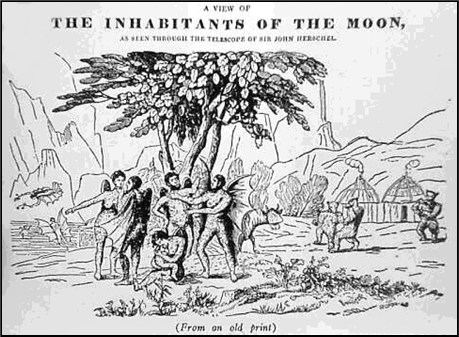 “Edinburgh Journal of Science” (which was no longer in existence!) describing life on the moon as seen by Herschel through his “revolutionary” telescope. The instalments gave a vivid account of the lunar landscape, its craters, vegetation and strange animals, and then went on to describe the moon “people” themselves, furry men and women who looked like bats and could fly like them! When Herschel finally heard of the hoax, he took it in good part, but complained that he had been pestered by journalists and others from all over Europe!
“Edinburgh Journal of Science” (which was no longer in existence!) describing life on the moon as seen by Herschel through his “revolutionary” telescope. The instalments gave a vivid account of the lunar landscape, its craters, vegetation and strange animals, and then went on to describe the moon “people” themselves, furry men and women who looked like bats and could fly like them! When Herschel finally heard of the hoax, he took it in good part, but complained that he had been pestered by journalists and others from all over Europe!
xxxxxThe hoax, it turned out, originated from Richard Adams Locke, the editor of the Sun, and was meant as a satirical attack upon the extravagant and pompous works of a local writer of scientific books named Dr. Thomas Dick. Locke later admitted that his hoax had got somewhat out of hand. The illustration shows the moon people together with beavers that walked on their hind legs and lived in wooden huts! It reads: As seen through the telescope of Sir John Herschel.


